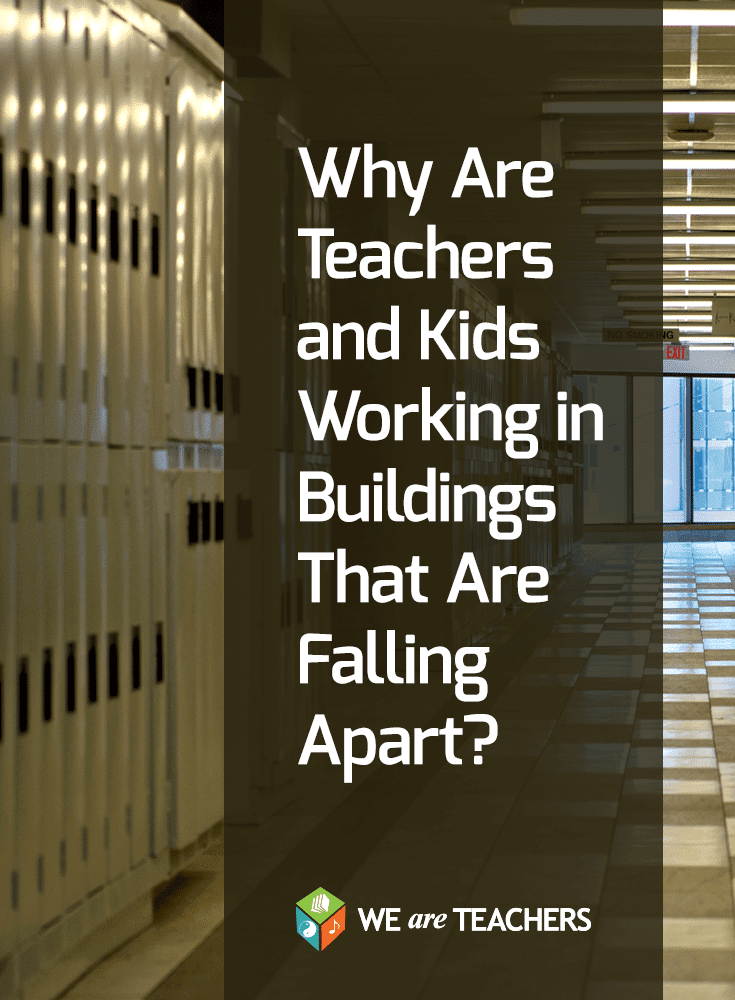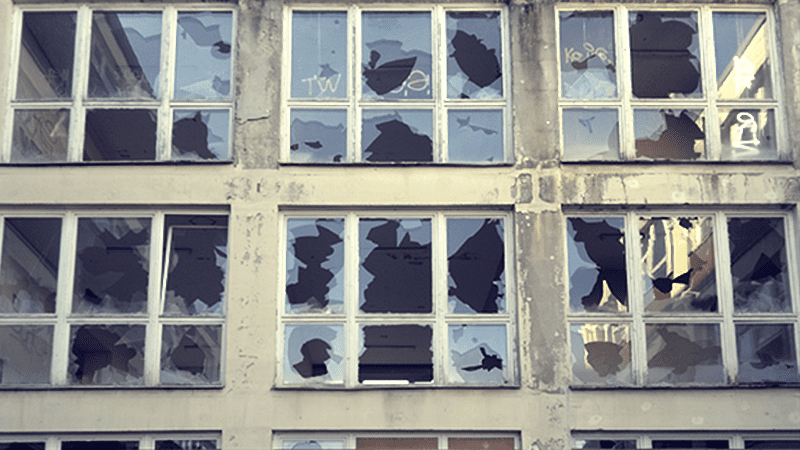Conditions in school buildings are so bad in Detroit that teachers recently staged a walkout to call attention to health and safety problems ranging from mold and leaky ceilings to rodents and lack of heat.
But it’s not just Detroit that’s the problem. Across the country, tight school budgets have meant maintenance has been deferred in many facilities, and aging buildings are not getting needed repairs. As a result, the climate in which students learn and teachers work is deteriorating—and it is taking a toll.
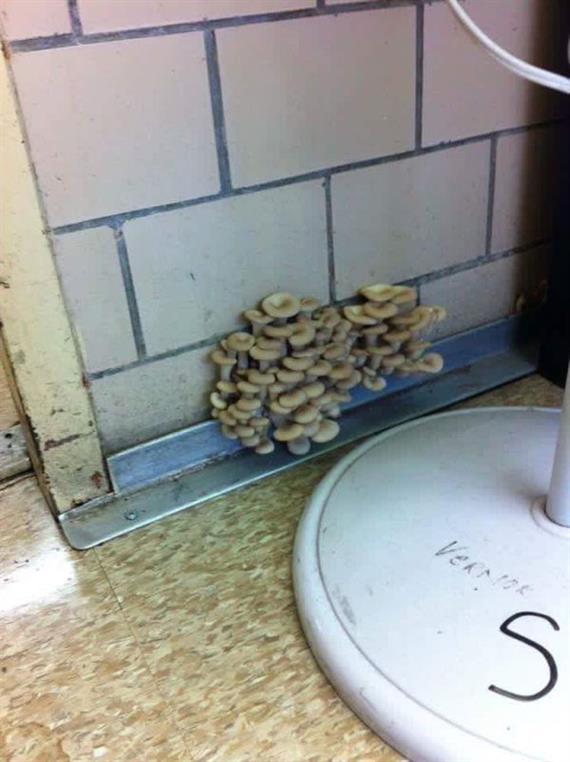
This photo of mushrooms growing in a Detroit classroom was one of the first to spark viral outrage. via @Detroitteach
Dilapidated facilities can hurt teacher morale and retention. Research shows environmental hazards, such as indoor air pollution, molds and chemical mismanagement, can adversely impact students’ ability to learn and their short- and long-term health.
Children are particularly sensitive to environmental health risks because their bodies are still developing and they proportionally eat, drink and breathe more per pound of body weight than adults.
Also, although they outnumber adults in schools 10 to 1, they are least able to identify or to protect themselves from exposures to different environmental hazards, says Claire Barnett, founder and executive director of Healthy Schools Network, a national nonprofit that promotes healthy school environments.
A “Perfect Storm”
Public schools are falling into disrepair at a time when the children they serve have greater needs, with more low-income students, underrepresented minorities and students with disabilities enrolled than at private schools.
“It’s a bit of a perfect storm. You have children who are already more vulnerable than the adults around them and you have children who are already at risk for a variety of factors, and you put them in buildings that are falling apart—it’s hard to get attendance achievement scores up in that situation,” says Barnett.
The condition of a school building may have a stronger influence on student performance than the combined influences of family background, socioeconomic status, school attendance and behavior, according to the National Clearinghouse for Educational Statistics. More specifically, students who attend better buildings have test scores ranging from 5 to 17 percentile points higher than students in substandard facilities.

Ronald Lumpkin, assistant professor of architecture and engineering technology at Florida Agricultural and Mechanical University in Tallahassee, Florida, found students in elementary, middle and high school buildings that were up to code did better on state math and reading tests.
“When humidity levels are adequate, heating levels are adequate, and there is good plumbing and ventilation, student performance increases, as well as teacher engagement,” Lumpkin says his research revealed.
Just How Bad Is It?
All children in the United States should be considered at risk for learning and health problems because of unexamined and unaddressed environmental hazards in school buildings and lack of health services, according to a recent report from Healthy Schools Network.
In the mid-1990s, studies showed that one in five of our nation’s 110,000 schools reported unsatisfactory indoor air quality, and one in four schools reported ventilation—which impacts indoor air quality—as unsatisfactory.
In 2013, the National Education Association polled members and found 62 percent surveyed experienced indoor environmental-quality problems at school; 63 percent reported IEQ contaminates to administrators; and about half reported the problems affected their health and that of their students.
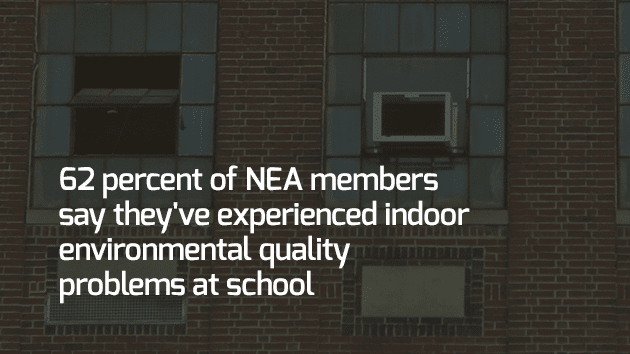
Still, there is no regular system of tracking the physical conditions of the nation’s schools and the presence of environmental health risks on children. Without this information, advocates say it is very difficult to intervene and measure progress to prevent environmental risks to children in schools.
Uneven State Response
While interest in repairing America’s schools has ebbed and flowed, the current effort at the national level is at an “all-time low,” says Barnett. That leaves the job to states—and funding and attention varies widely. Recent cuts have hit school building budgets particularly hard.
A recent survey by the network found only 28 states do assessments of school building needs and 40 states ever provided assistance with any construction and repair.
A Range of Problems
Schools can be unhealthy for a number of reasons.
There are legacy toxics in school such as radon, lead, asbestos and PCBs in the light fixtures. Sometimes lack of training, staffing, knowledge or money can lead to problems, such as the use of outdated chemical cleaning products or ignored plumbing leaks creating mold.
Not all buildings need to be replaced; age is not always the issue. “There are plenty of old buildings that are healthy because they are well cared for,” notes Barnett.
The Need to Speak Out
School nurses, administrators and teachers who know about environmental health problems need to share information with parents who don’t have the same daily access to buildings, says Barnett, who encourages parents to get more involved and ask for Saturday building tours.
“School personnel need to be brave enough to find a way to communicate with parents,” adds Barnett, noting it’s often parents of kids with preexisting health issues, such as asthma, who ban together to push for improvements.
“Fewer teachers and fewer school staff are willing to speak out on the issue because the fiscal climate hits them as well,” says Barnett. “Jobs are being lost at the local level and people are very unlikely to speak out if they think their job is at risk.”
Tackling Issues Together
To get building issues addressed, advocates suggest teachers keep constant pressure on the administration. Sometimes that means working with unions to voice concerns and, as in Detroit, holding public protests.
“What teachers and unions can do is powerful,” says Barnett. “They do step up when the situation is incredibly dire, but before they get to a crisis point, there needs to be more publicity.”
Since schools are typically understaffed with custodians, Barnett says all staff members should keep their eyes on the building. Set up a box or email address to receive notice when a lightbulb goes out or new holes appear in the wall so small problems can be fixed before they worsen.
Internal Steps to a Healthy School
Aside from major financial investments, Barnett says there are plenty of things that schools and teachers can do to make buildings healthier. For instance, switch to green cleaning products and nontoxic pest control.
Also, reduce clutter in classrooms. Avoid stacks of papers where dust can accumulate and instead use plastic storage bins. Don’t overdecorate with used furniture or rugs, and get food out of the classroom to help with pest control. “Think minimal with clean, spare, open-air design,” she says.
Investments Pay Off
While still a struggle, there are pockets of progress and more organizations are aware of environmental problems in schools.
There are now 30 states that have adopted indoor air-quality protocols for schools. Also many districts are adopting less-toxic pest control protocols.
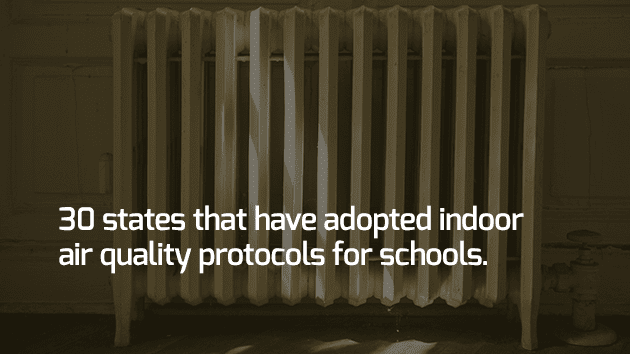
Barnett notes the issue is a matter of social justice and equity in many places, as schools in the worst conditions are those that serve low-income and minority children.
Although it may take time and money up front, Barnett says it’s highly cost effective to maintain a healthy building. In the end, it leads to a better learning environment where children are more likely to achieve and teachers are more effective.
For more information, check out these resources:
– Healthy School Network / Healthy Kids Clearinghouse
– EPA Student Health and Academic Performance Quick Reference Guide
Do you teach in a deteriorating school? We want to see your photos. Share them in the comments or email us at support@weareteachers.com.
